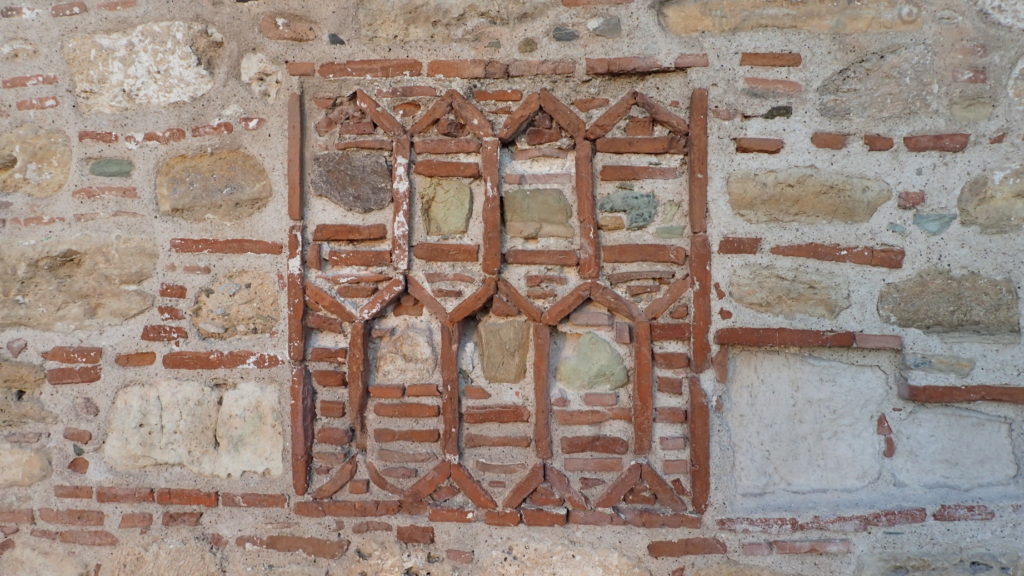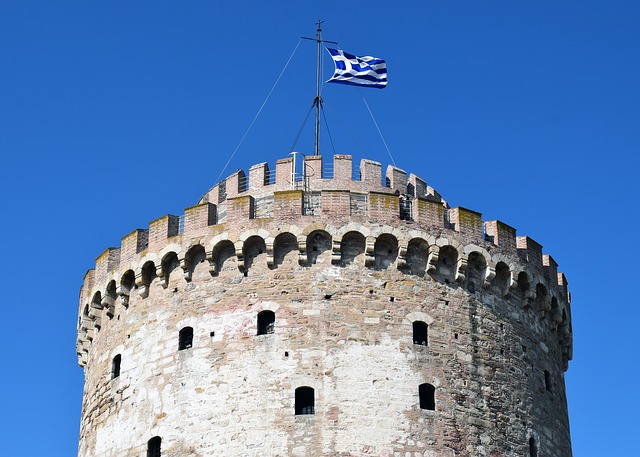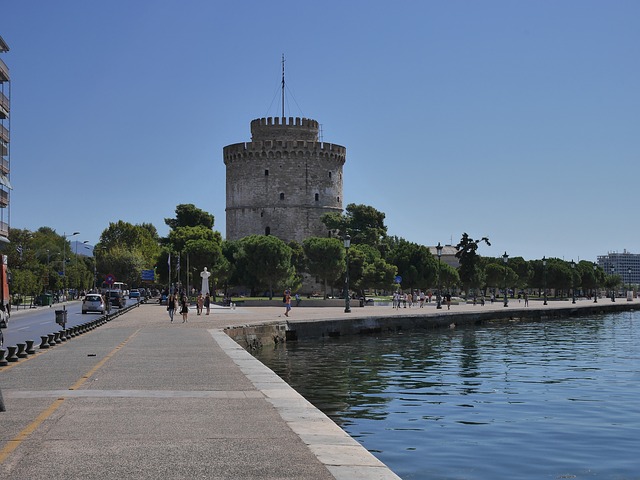The White Tower of Thessaloniki is the city’s most recognizable site. This beloved symbol of the Thessaloniki at the waterfront is the center of activity, key to the city’s branding, and one of the city’s top sights.
But it wasn’t always so beloved. In fact, it wasn’t even always white.
Related post: Best Things to Do in Thessaloniki – Sights, Activities, and Cultural Experiences
The Dark History of The White Tower
The White Tower of Thessaloniki we see today only became the “Bayaz Kule”- “White Tower” in 1883. It had other names before that. Initially it was the Tower of the Janissaries – the elite infantry of the Ottoman Empire. The tower later became a prison, and that’s when it took its most memorable name: “Kanle Kule”- the Tower of Blood. What today is the observation deck was a place for executions, and the tower was reportedly dark with their blood.
This ultimately became a public relations image problem. As the Ottoman Empire – encouraged by the west, and England in particular – underwent reforms, it needed an image overhaul. Sultan Abdul Hamid II ordered the tower to be painted white, and called for a name change. The huge task of painting it fell to an inmate. He earned his freedom in exchange, and what was once the Tower of Blood became the White Tower.

The White Tower and the Walls of the City
Large parts of Thessaloniki’s Byzantine walls are still standing. There once was an eastern wall, and a wall at the seafront, and these met at an earlier tower on the site where Thessaloniki’s White Tower is today. The White Tower was surrounded by a crenellated enclosure (a “chemise”) until 1911. The walls only came down to widen the road for triumphal parades.
The Architect Mimar Sinan and the White Tower of Thessaloniki
When the Ottomans, under Murad II, conquered Thessaloniki, it quickly became one of the gems of the empire. The empire needed a tower to defend and impress on such a prominent spot. Thessaloniki’s White Tower is widely attributed to the great Mimar Sinan. Sinan was the chief architect and civil engineer of the Ottoman empire for decades – he had a long and productive career. Much of his early work was military fortifications. He later built many mosques, hammams, and other public structures. Some of Sinan’s Mosques number among the masterpieces of Islamic architecture.

The Top of the Tower and its Flag
The views from the top of the White Tower are better than you would think. And so is the story: There’s a glorious Greek flag flying in the breezes of the Thermaikos. That flag flies not from a flagpole, but from a trophy of war. In the days before the liberation of Thessaloniki from Ottoman rule on October 26, 1912 (day of the city’s Patron Saint, Agios Dimitrios), the Greek Admiral Nikolaos Votsis sank the Ottoman ship Feth-i Bülend. Its mast is what the Greek flag now flies from. There’s a bust of Admiral Votsis right next to the White Tower but this mast may be the best commemoration of all.
What to See in the White Tower
Today, the White Tower houses a Museum of the History of the City. Taking advantage of the unique architecture of the site, the history of the city unfolds through thematic units over seven floors. The transformations of the city over time, the city’s cultural and intellectual life, the stories of the many populations who have called it home, and the culinary heritage of Thessaloniki are among the topics.
The Exhibitions are in Greek, but there are audio guides available in English,German, Turkish, and Russian.

How to Get to the White Tower
The White Tower is nearly impossible to miss. It is at the eastern edge of the main part of the downtown, a kilometer and a half east of the first pier of the port. By public transportation, you can take the buses 3K, 5, 6, 15, and 33 to the stop “White Tower”.
Information, Hours, and Admission for the White Tower’s Museum
The White Tower is open daily, from 8:00 – 20:00, until the end of October when shorter Winter hours resume. Admission is 4 eu, 2 eu for Students from outside the EU and for Seniors from within Greece and the EU. Admission is free for EU students and people up to 18.

